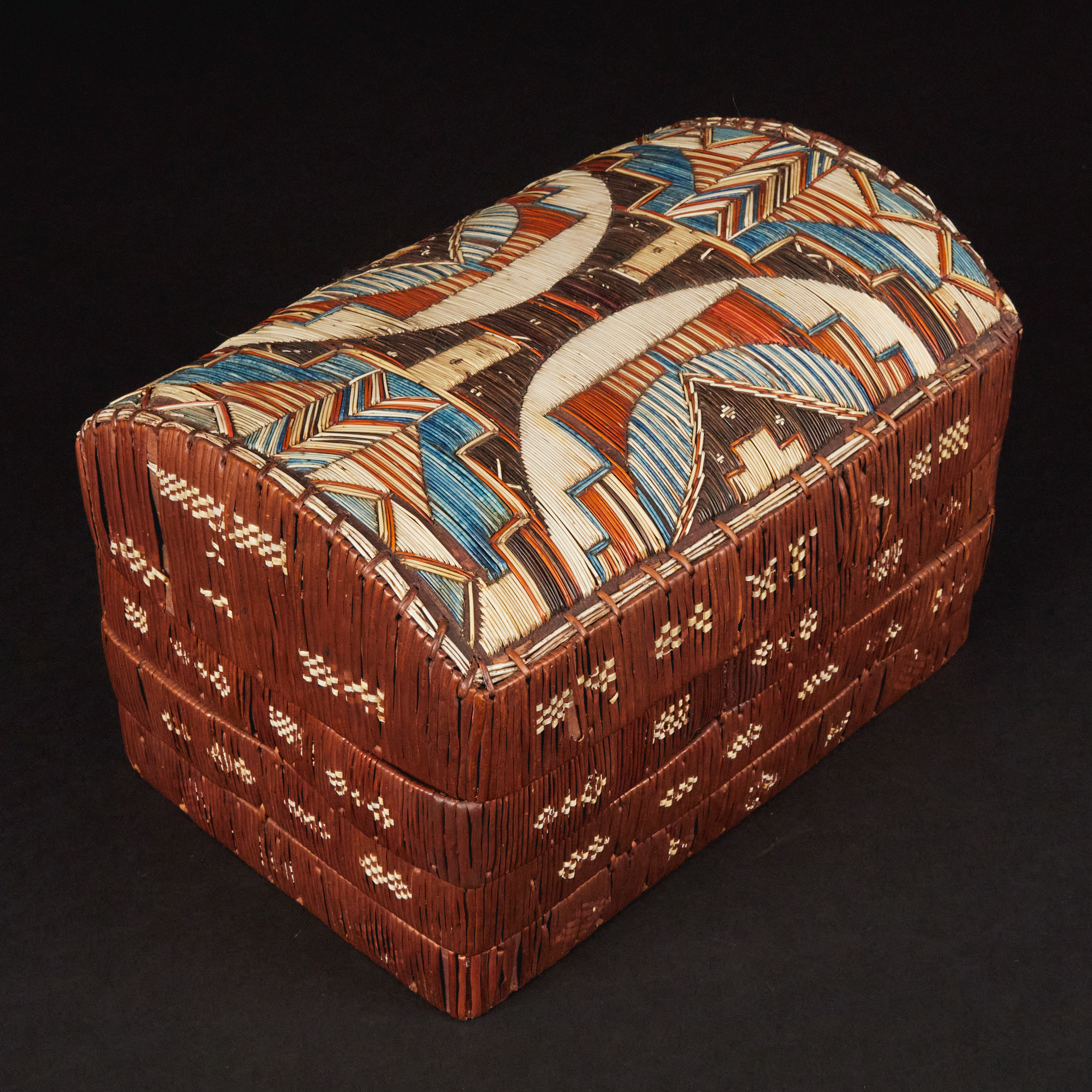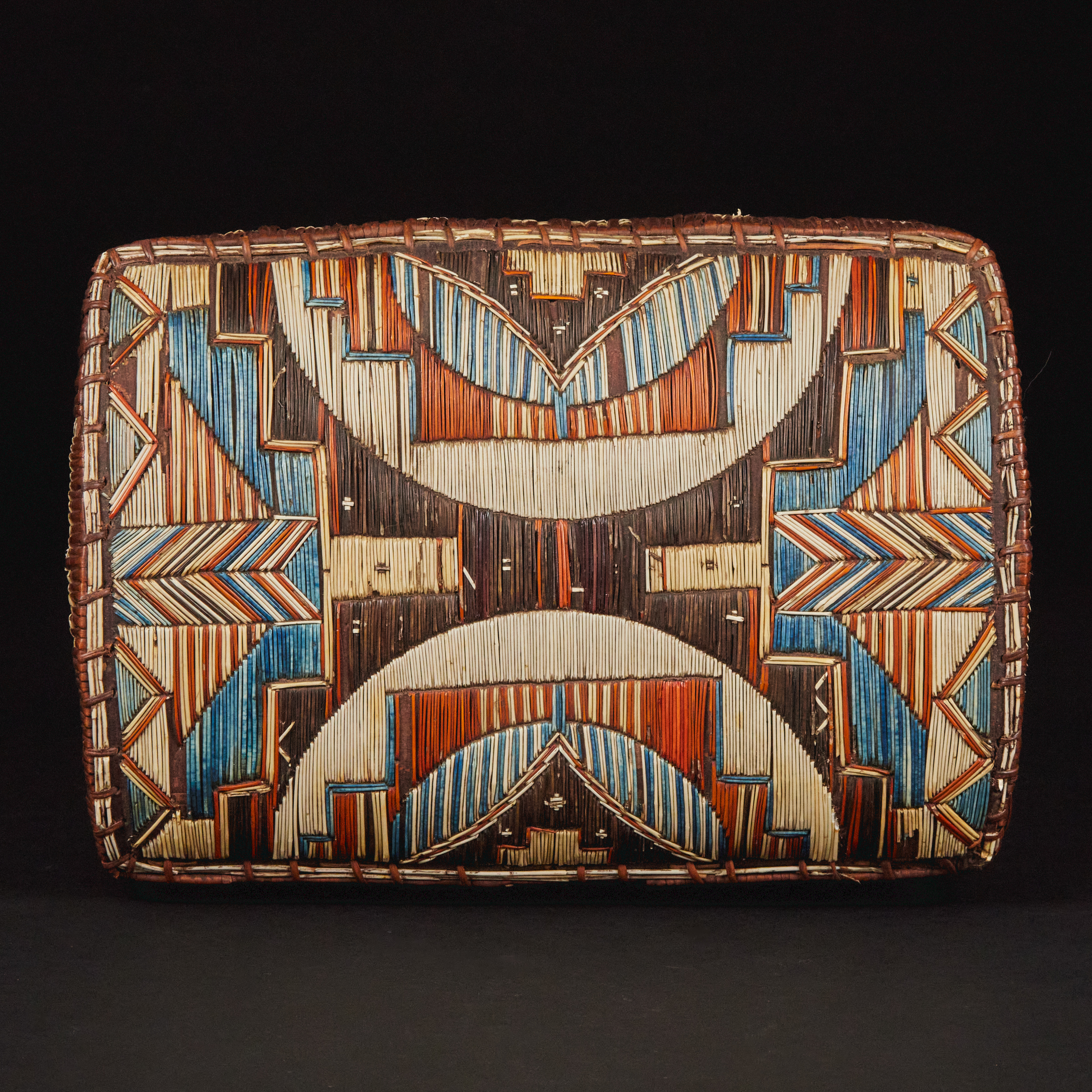Lot 11
Unidentified Mi'kmaq Artist

Additional Images

Provenance:
Private Collection, United Kingdom;
Donald Ellis, New York, NY;
Collection of Steven Blevins & Sonja Morawetz, Ontario
Note:
From the time of the earliest written accounts of the Mi’kmaq, their exceptional quillwork was noted. (1) A perishable material, the earliest known Mi’kmaq use of quillwork is unknown, but by the turn of the 19th century it was a well-developed artform. The decline of the profitability of the fur trade saw the production of objects made for trade or sale proliferate, and it is during this period when the present box was made.
A lidded box was a favoured item with 19th century English traders and buyers. Most boxes were small square or cylindrical forms that were less laborious for makers to produce than larger and more elaborate objects. Smaller designs were also well suited for transport by visitors whose acquisitions often had to be confined to the cramped onboard conditions of the ships that granted them passage.
The present exceptionally fine example is of a complicated-to-manufacture trunk-form, and is remarkably large in size, comparable to a well known example at the Metropolitan Museum of Art, 2011.154.8a, b from the collection of Ralph T. Coe. (2) Its scale and uniformity are indicative of a high degree of craftsmanship. Motifs embellishing the box include some of the earliest known quillwork designs. Motifs include the “double rainbow,” “V,” cross, and the chevron design said to reference the fir-tree, a symbol of “venerable age and strength.” (3)
In notably intact condition with a vibrancy of dye colour, the present example was acquired from an old private English collection.
1. Ruth Holmes Whitehead, Micmac Quillwork: Micmac Indian Techniques of Porcupine Quill Decoration: 1600-1950, (Halifax: The Nova Scotia Museum, 1982), 5
2. Ralph T. Coe et al, The Responsive Eye: Ralph T. Coe and the Collecting of American Indian Art, (New York: Metropolitan Museum of Art, 2003), 124
3. Whitehead, 146
Related Works:
Royal Ontario Museum, Cat. No. ROM 990.217.2.1.1
Royal Ontario Museum, Cat. No. ROM 990.217.2.2.1





